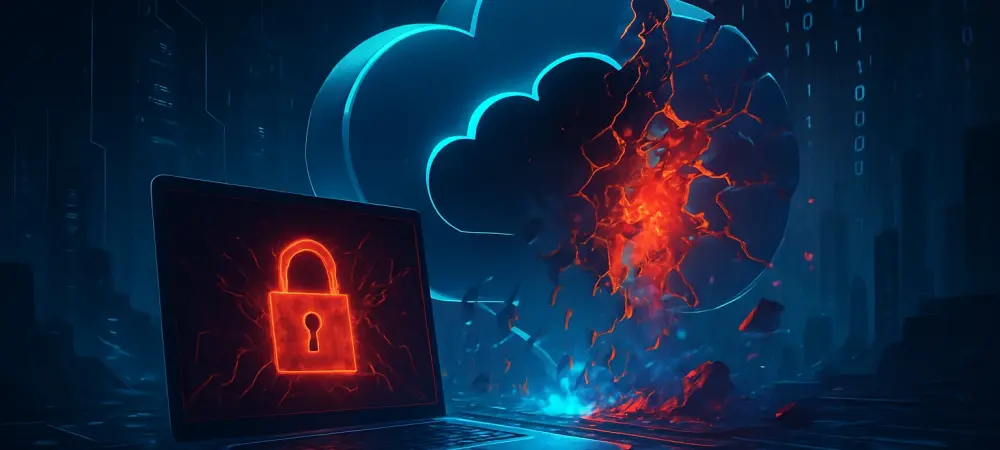Imagine a single vulnerability in a widely used third-party tool cascading into a breach affecting numerous organizations, exposing sensitive corporate data in the process. This scenario became reality with a recent supply chain attack targeting Zscaler, a leading security vendor, via the Salesloft Drift integration with Salesforce. Attributed to the threat actor UNC6395, this incident has sparked intense discussion in the cybersecurity community about the risks of third-party integrations. This roundup gathers diverse opinions, tips, and analyses from industry voices to unpack the breach, explore its implications, and offer actionable strategies for safeguarding against similar threats.
Diverse Perspectives on the Supply Chain Attack
Unraveling the Mechanics of the Breach
Industry analysts have closely examined how the attack unfolded, pinpointing the theft of OAuth tokens linked to the Salesloft Drift app as the critical entry point. This breach allowed unauthorized access to Zscaler’s Salesforce environment, compromising data such as names, business emails, and support case content. Many experts agree that the precision in targeting integrations highlights a growing sophistication among threat actors exploiting trusted tools.
Differing views emerge on the scale of intent behind this campaign. Some cybersecurity professionals argue that the operation, active between August 8 and August 18, reflects opportunistic hacking leveraging readily available vulnerabilities. Others suggest a more calculated effort, pointing to the operational discipline of UNC6395 as indicative of deeper strategic motives, though no consensus has been reached on potential state involvement.
A third angle focuses on the technical simplicity of the exploit itself. Several commentators note that while the attack vector was not overly complex, its success underscores a widespread lack of robust controls over third-party access. This perspective calls for a reevaluation of how organizations monitor and secure integrations with external platforms.
Broader Impact Across Corporate Networks
Beyond Zscaler, the ripple effects of this breach have alarmed many in the industry, as multiple organizations using Salesforce integrations were also targeted. Reports indicate that large volumes of data were exfiltrated during the campaign, affecting a range of sectors. Some experts emphasize the cascading nature of supply chain attacks, where a single weak link can jeopardize entire ecosystems.
Contrasting opinions arise on the severity of the fallout. Certain analysts highlight the immediate risk of data loss, while others warn of secondary threats like phishing campaigns that could exploit stolen contact details. A few industry voices stress that the breach’s impact extends beyond tangible losses, potentially eroding trust in cloud-based platforms and third-party vendors.
Another viewpoint considers the global scope of such incidents. Cybersecurity specialists note varying levels of exposure across regions, with some suggesting that organizations in highly digitized markets face greater risks due to their reliance on interconnected tools. This diversity in impact fuels debates on how to prioritize defense strategies across different corporate landscapes.
Expert Tips for Strengthening Defenses
Immediate Actions to Mitigate Risks
In response to the breach, many industry leaders advocate for swift, decisive measures to contain potential damage. A commonly cited tip is the immediate revocation of access for compromised third-party apps, as Zscaler did with the Drift integration. Rotating API tokens and other credentials is also frequently recommended to block further unauthorized entry.
Another piece of advice centers on enhancing visibility into third-party connections. Several cybersecurity consultants suggest conducting thorough audits of all integrations to identify and address vulnerabilities before they can be exploited. This proactive stance is seen as essential in preventing breaches from escalating into larger crises.
A less discussed but equally critical tip is the need for employee training. Experts in organizational security stress educating staff to recognize phishing attempts and social engineering tactics, especially in the wake of exposed contact data. This human-focused approach complements technical safeguards, creating a more resilient defense framework.
Long-Term Strategies for Supply Chain Security
Looking toward sustainable solutions, many in the field call for a fundamental shift in how supply chain security is approached. A recurring recommendation is the adoption of stricter access controls for third-party tools, ensuring that permissions are limited to only what is necessary for functionality. This principle of least privilege is viewed as a cornerstone of modern cybersecurity.
Differing opinions surface on the role of technology in addressing these threats. Some professionals push for investment in continuous monitoring tools to detect anomalies in real time, arguing that automated systems can outpace human oversight. Others caution against over-reliance on tech, advocating for a balanced approach that integrates regular policy reviews and cross-departmental collaboration.
A unique perspective emphasizes vendor accountability. Certain industry watchers propose that organizations should demand greater transparency from third-party providers regarding their security practices. This collaborative model, they argue, could foster a shared responsibility culture, reducing the likelihood of future supply chain vulnerabilities being overlooked.
Lessons Learned and Paths Forward
Reflecting on this incident, the cybersecurity community reached a broad consensus on the urgent need to prioritize third-party integration security. The breach involving Zscaler and the Salesloft Drift app exposed critical gaps that many organizations had previously underestimated. Experts from various corners of the industry provided valuable insights into both the immediate responses and the broader implications of such supply chain attacks.
Moving forward, businesses were encouraged to take concrete steps, such as implementing regular security audits and fostering a culture of vigilance among employees. Exploring advanced monitoring solutions and holding vendors to higher security standards emerged as vital strategies to prevent similar incidents. These actionable measures offered a roadmap for organizations aiming to strengthen their defenses in an increasingly interconnected digital environment.

